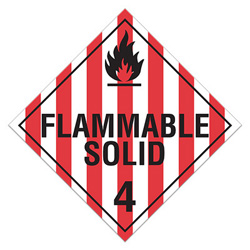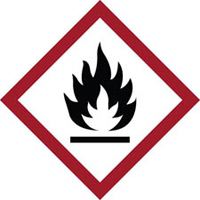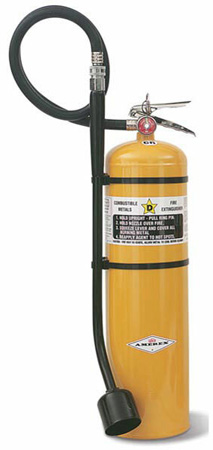| The Home page of ILPI's Safety Data Sheet (SDS) Resource, the leader in SDS information since 1995! | |
| The history and philosophy behind this resource. | |
| A curated collection of books and reference materials concerning Safety Data Sheets and closely related topics. | |
| Paste your plain text SDS into the SDS-Demystifier, and it will be converted into a hypertext-enriched document with links to detailed explanations of each key term. | |
| An extensive list of frequently asked questions about Safety Data Sheets including regulations, content, compliance, and more. | |
| A humorous take on Safety Data Sheet jargon. Fill in the blanks on our entry form to generate a personalized Unsafety Data Sheet to share with your coworkers. | |
| Since 1995, we've maintained this massive curated list of the best places to find Safety Data Sheets on the Internet. | |
| You are here! Way more than a glossary, this hypertext-enhanced resource covers hundreds of SDS-related terms and expert knowledge. Each entry includes both the SDS relevance and links to additional authoritative resources. | |
| Archived results of Safety Data Sheet related polls taken by some of our millions of site visitors | |
| The OSHA regulations behind SDS regulations, including the inspection guidelines and over 400 official interpretations letters under the Hazard Communication Standard | |
| Commercial suppliers of SDS authoring and management software as well as cloud compliance services. | |
| Commercial companies that will create SDS's for your specific needs as well as SDS translation companies. |

Safety signs, banners, and scoreboards? Get yours at Safety Emporium!

Be sure you're in compliance with DOT placards and labels from Safety Emporium.
Definition
A flammable solid is defined by the U.S. Department of Transportation (DOT) quite extensively (see 49 CFR 173.124). Three broad classes are:
- Desensitized explosives such as those wetted with sufficient water, alcohol, or plasticizer to suppress explosive properties.
- Self-reactive materials that are thermally unstable and that can undergo a strongly exothermic (heat-evolving) decomposition even without the participation of oxygen (air). Certain exclusions apply.
- Readily combustible solids. Examples include:
- Solids which may cause a fire through friction, such as matches.
- Pyrophoric (literally, "fire-loving") materials, those that can ignite with no external ignition source within five minutes after coming in contact with air.
- Self-heating materials, those that exhibit spontaneous ignition or heat themselves to a temperature of 200 deg.C (392 deg.F) during a 24-hour test period. (This behavior is called spontaneous combustion)
- Dangerous when wet materials, those that react with water to become spontaneously flammable or to give off flammable gas or toxic gas at a rate greater than 1 liter per kilogram of the material, per hour.
Paragraph B.7 of Appendix B of the 2012 version of the OSHA Hazard Communication Standard (HCS 2012), 29 CFR 1910.1200 defines a flammable solid as one that is "a readily combustible solid, or which may cause or contribute to fire through friction."
Additional Info
Paragraph B.7 of HCS 2012 outlines several principles for the hazard classification of a flammable solid and then assigns materials to one of two Categories using the following criteria:
| Category | Criteria |
| 1 | Burning rate test: Chemicals other than metal powders: (a) wetted zone does not stop fire; and (b) burning time < 45 s or burning rate > 2.2 mm/s Metal powders: burning time ≤ 5 min |
| 2 | Burning rate test: Chemicals other than metal powders: (a) wetted zone stops the fire for at least 4 min; and (b) burning time < 45 s or burning rate > 2.2 mm/s Metal powders: burning time > 5 min and ≤ 10 min |

Flame pictograms and other GHS-compliant labels and signs are available from Safety Emporium.
The labeling provisions of HCS 2012 require that Category 1 or 2 flammable solid containers carry the flame pictogram (shown on the right) to provide a quick visual warning of the flammability hazard. The GHS does not require these symbols to appear on the SDS itself, however most responsible manufacturers will do so to preserve the correspondence between a substance's SDS and label.
Because of the special hazards posed by flammable solids (and other dangerous goods), shipment of these materials can be difficult. For example, the US Postal Service will not accept shipments of flammable solids by air, and will only ship these by ground subject to certain restrictions. Likewise, United Parcel Service requires the shipper to be HazMat-certified and has limitations on quantities. All carriers, including FedEx, have special handling fees for such shipments.
DOT has very hefty fines for violation of dangerous goods shipping regulations. For example, in 2014, Amazon was fined $91,000 for shipping an improperly packaged and labeled one gallon container of flammable liquid that sprung a leak during transport. Later that year, they were assessed a $350,000 fine for a leaky package that injured several UPS workers.
SDS Relevance
The Safety Data Sheet for a flammable solid will note this hazard under Section 2 (Hazard(s) identifications) as well as several other sections regarding firefighting measures, storage, stability and reactivity, transportation, and more. Always ready the complete SDS in detail for such substances.
Always use caution around flammable (or potentially flammable solids). For example, most people do not normally think of aluminum metal as a flammable solid, but when finally divided into dust (or heated to high temperature) it can readily ignite with a fierce flame that can not be extinguished with a typical fire extinguisher. Uranium is another metal that some may not recognize as flammable.

Get your Class D and other specialty extinguishers from Safety Emporium.
If you are using flammable metals (lithium, sodium, potassium etc.) or flammable metal compounds (butyllithium, diethylzinc etc.) recognize that using water or carbon dioxide fire extinguishers can fuel fires of these sorts. You must have a class D extinguisher on hand if you are using these materials. See this reference for details.
Industrial flammable metal fires are some of the most terrifying incidents one can imagine. Some examples include:
- 1971 Thiokol-Woodbine explosion at a flare factory
- 2015 magnesium fire at a recycling plant in Springfield, Massachusetts.
- An explosive titanium fire at United Alloys and Metals caused several injuries. The video of this incident is frightening.
- A 2016 magnesium explosion at a recycling facility near Los Angeles is utterly terrifying. Local news coverage provides details and additional video footage.
Further Reading
- The DOT shipping label/placard shown above is required under 49 CFR 172.420.
- Flammable Solids under HCS 2012 by the SCHC-OSHA Alliance.
- The Oregon State Fire Code has detailed information (PDF) on the storage and use of flammable solids, particularly magnesium metal.
- Hazardous Materials: Flammable Solids Safe Handling Guidelines (PDF file) at Stanford University's Linear Accelerator Laboratory. Hey, they reference us! Available thanks to the Internet Archive.
- Standard Operating Procedures for Flammable Solids, a downloadable Word template from the University of California, Davis.
- Water and Magnesium Fires: Developing an Attack Plan at Firehouse.com.
- The University of Massachusetts Boston has a page on MET-L-X Powder (Sodium Chloride) Fire Extinguishers that explains the proper way to use a Class D NaCl fire extinguisher.
- Guidelines for Handling Aluminum Fines Generated During Various Aluminum Fabricating Operations by the Aluminum Association.
See also: combustible, flammable, flash point, water reactive.